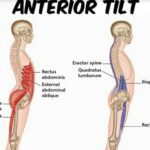Injuries, both old and new, can keep us from preforming at our best. Clients ask what they can do to recover from injury quickly and prevent further injuries. One of the best things that someone can do is to apply ice or heat but it is important to choose the right therapy and then use it correctly.
When to use Ice
For a new, or acute, injury the first thing you want to use is ice. Why? The body wants to rush blood to the injury site, which is the cause of swelling, pain, bruising and increased temperature. Applying ice to the area will do two main things. First, it will constrict the blood vessels (vasoconstriction) in the area, which will decrease both the swelling and bruising at the site of the injury. Second, it will help to numb the surrounding nerves to decrease the pain.
Within the first 24 hours of injury, the best practice is to use RICE: Rest, Ice, Compression, and Elevation. Allowing yourself time to heal and reduce inflammation is the priority with a new injury.
When icing an injury, there are four main stages of cryotherapy that we experience. It is referred to as CBAN: Cold, Burning, Aching, and Numbness. Cold is the initial sensation that can be uncomfortable and usually lasts 0-3 minutes after application. At the 2-7 minute mark, it is common to experience a mild burning and aching sensation followed by numbness around the 5-12 minute marker. If something doesn’t feel right or one of these stages feels like it is taking too long, it is advised to check the skin for possible signs of frostbite.
When to use Heat
With a “nagging”, or chronic injury, heat is usually recommended to aid in healing by opening the small blood vessels (vasodilation) to flush the injury site of “old” blood and allow fresh, oxygenated blood to the site. With the exception of a new injury, heat can help to reduce muscle soreness and spasms, especially in the neck, mid and lower back. Those with osteoarthritis can also benefit from heat therapy to increase their range of motion and decrease pain.
Before a workout or any physical exertion, heat can be applied in conjunction with stretching to relax the muscles prior to activity. This is especially beneficial to those “nagging” injuries. Icing an injury before a workout can actually do harm since it could numb the nerves, not alerting the body that further injury is occurring. Instead, save the ice for the post-workout to lessen any inflammation that has occurred.
How to use Hot/Cold Therapy
So, how long do we apply either ice or heat? Funny enough, the time frame is about the same regardless of temperature. The consensus is 20-40 minutes of either ice or heat, as long as you are keeping an eye on the area. Both ice and heat can do damage to the skin and the nerves, in extreme condition. With either ice or heat, you want some kind of barrier between the skin and heat/cold pack to avoid direct contact. If the skin is red, that’s a bad thing. On top of an injury, you don’t need to add frostbite or a burn to the healing process.
Both ice and ice packs are about the same in temperature but the one-time use chemical ice packs can get much colder and extra observation at the injury site should be used while use. Heat or ice can be reapplied when the tissue regains both it’s normal color and temperature, usually 30-60 minutes break from application.
If an injury does not show signs of improvement, seek medical care. Further medical attention may be necessary and can include but not limited to: medication, X-Rays/MRI, and physical therapy.
From the stubbed toe, jammed finger, sprained ankle, or recovery from surgery, treating yourself with the proper heat/cold therapy, while paying attention to the heat or ice while applied, will help you get you back on your feet and back to normal life with less pain and faster recovery time.
Karen Maneely, LMT
References:
- http://health.howstuffworks.com/medicine/first-aid/ice-or-heat-for-injury.htm
- http://www.medicinenet.com/script/main/art.asp?articlekey=18347
- http://www.runnersworld.com/injury-treatment/cold-call
- http://www.active.com/fitness/articles/heat-vs-ice-best-practices-for-treating-an-injury
- http://balletshoesandbobbypins.com/ice-ice-baby-how-ice-works-on-injuries
- http://lecom.edu/healthynews.php/injuries-to-ice-or-to-heat/76/0/2818/13542
This article/video is for educational purposes only; do not attempt without your physician’s clearance. If you are in pain or injured, see your physician.
Copyright © Vidal Sports LLC 2018






